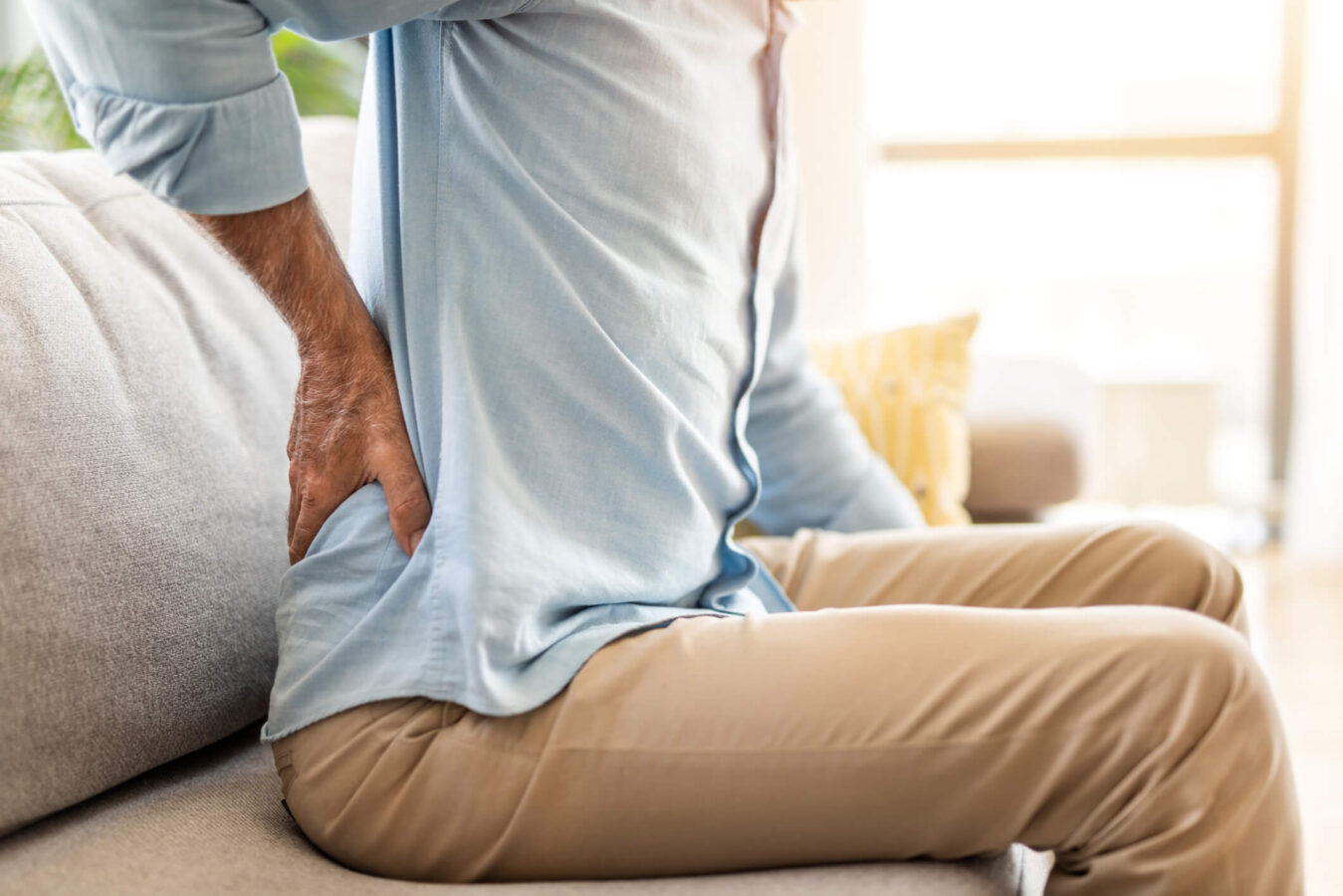
Medically reviewed by Misty Seidenburg
Around the age of 40, most people develop some degree of deterioration of the rubbery discs that support and cushion the bones of the spine. In this article, we will explore the natural progression of this disorder, what causes degenerative disc disease, and look at ways physical therapy can help improve strength and flexibility throughout the spine.
The term degenerative disc disease may be a bit misleading. It is not necessarily a disease but more of a condition that typically accompanies aging.
The rubbery discs located between the vertebrae of the spine are shock absorbers and allow you to bend and twist easily and comfortably. The discs start to dry out a bit as we age, and the bones may have to do more work. Some stiffness and changes in mobility due to this natural progression are a normal part of aging, although not all people experience these changes.
In some individuals, back pain may be developed and is often associated with these changes. The good news is that we know pain is not associated with imaging findings. Structural abnormalities are found in people complaining of low back pain and those who are asymptomatic.
Symptomatic degenerative disc disease includes complaints of back pain and/or neck pain that may come and go and last for days or weeks at a time. Pain can be local to the area and radiate down through the lower back and into the buttocks.
Some patients find pain gets worse with certain activities that involve twisting and bending. Numbness and/or tingling in the extremities may also be a sign of degenerative disc disease.
Pain varies from person to person. It can range from mild, to moderate or severe, but is not associated with the level of degeneration seen in the spine. The great news about this is that it tells us our bodies are very resilient and symptoms can often be managed conservatively.
Spinal disc changes due to aging have two main causes:
As mentioned above, disc degeneration is a part of the natural aging process, as the inner core that contains water begins to dry out. This leads to thinning over time that reduces the ability of discs to cushion the bones.
Repetitive movements from daily tasks, sports, and minor injuries can create small fissures in the outer layers of the spinal discs. If these cracks are located near nerves, they can be especially painful. In some cases, the outer disc wall develops a larger crack, causing it to shift out of place, compressing the nearby spinal nerve. This is known as a herniated disc.
Certain lifestyle factors increase the risk of pain associated with degenerative disc disease. It is helpful to be aware of these so you can make proactive changes to reduce the risk of developing symptoms. Risk factors for pain associated with disc degeneration include:
Physical therapy is a conservative modality often prescribed for patients with symptoms associated with confirmed degenerative disc disease. While it is not intended to correct the underlying disc damage, it is highly effective for alleviating the symptoms resulting from the degenerative process.
No one is immune to the effects of aging. However, physical therapy can help you stay active and independent for as long as possible with symptom management. Here are the top ways physical therapy helps patients with degenerative disc disease:
Regular aerobic exercise like walking, light jogging, and aquatic therapy help relieve pain and increase strength and mobility. It also helps you maintain a healthy weight. All these benefits are good for your discs.
Your physical therapist teaches you safe and gentle movements to increase joint and muscle movement. Increased range of motion is often the key to reducing pain for many patients.
By developing the muscles of the arms, legs and core, you can ease the load on your spinal joints, slowing down the wear and tear process.
Manual therapy encompasses a range of hands-on therapies to improve movement in areas of stiffness or restriction that may be contributing to back pain.
Physical therapy also offers pain management techniques to help you achieve relief without the risk of dependence on pain medication. Electrical stimulation, spinal traction, and heat therapy can help with pain management.
Physical therapists are movement experts. And they want to share their knowledge with you. Your therapist will teach you minor changes to make in the way you sit, stand, lift, lie, and bend to reduce your pain and help you manage your condition.
Keep in mind, physical therapy is just one of several treatments available for degenerative disc disease. And surgery may be recommended for more severe cases. Speak with your healthcare provider and physical therapist for a holistic plan to combat pain and inflammation.
To learn more about relief from back pain without medication or surgery, find a physical therapy clinic near you.
